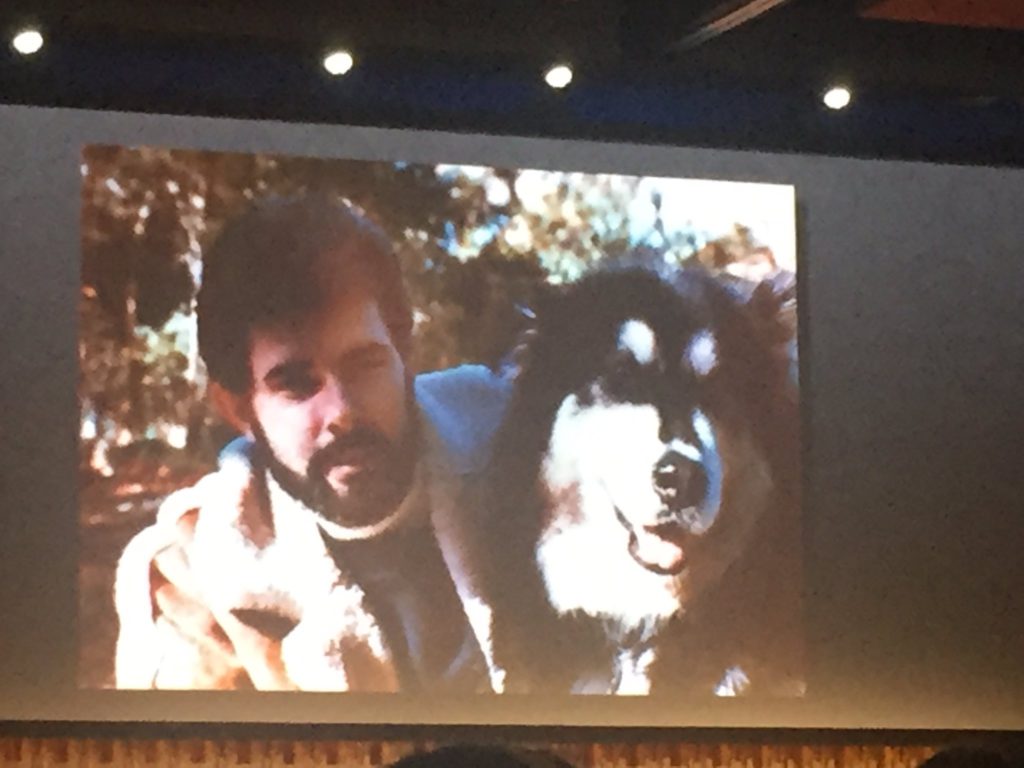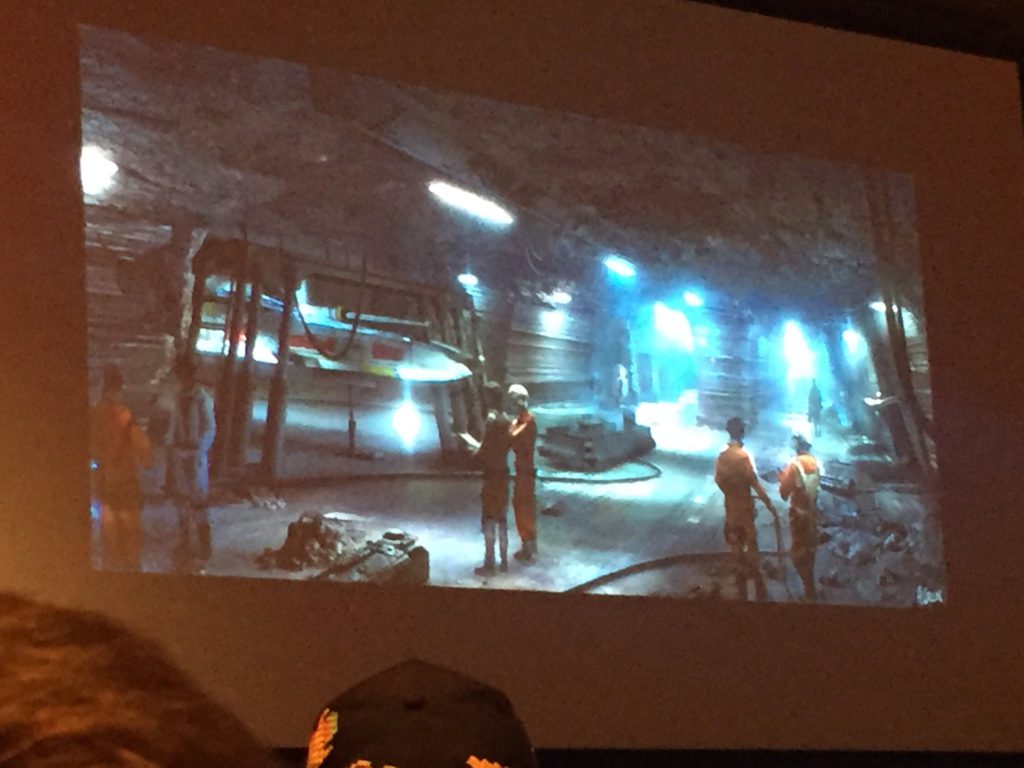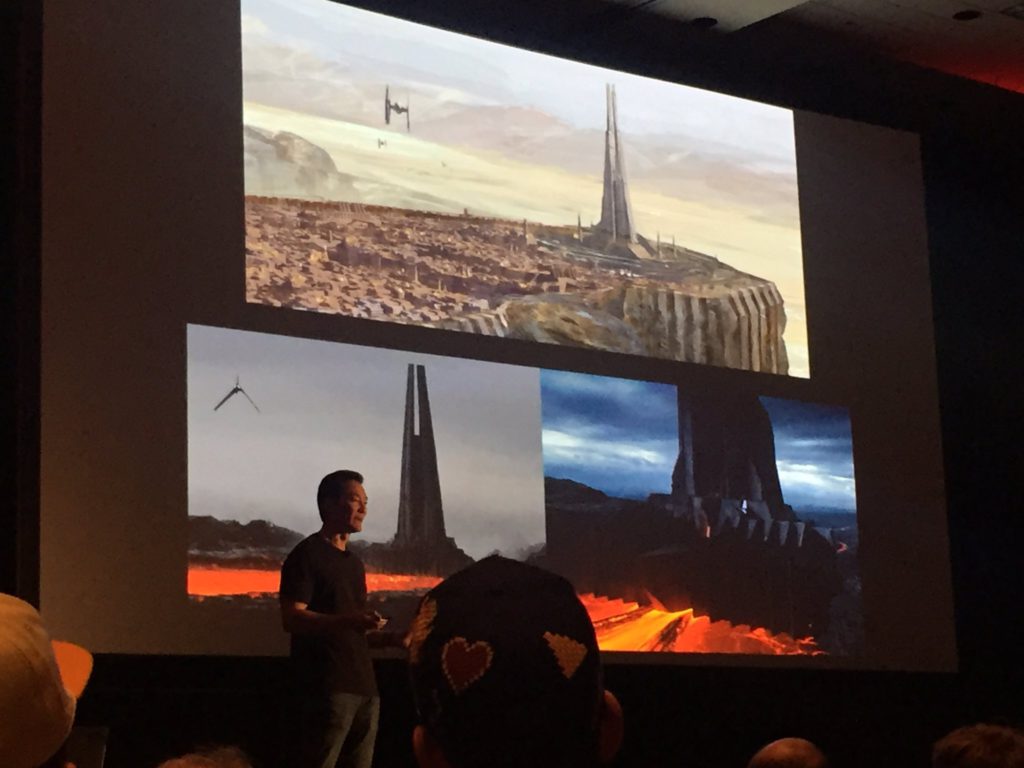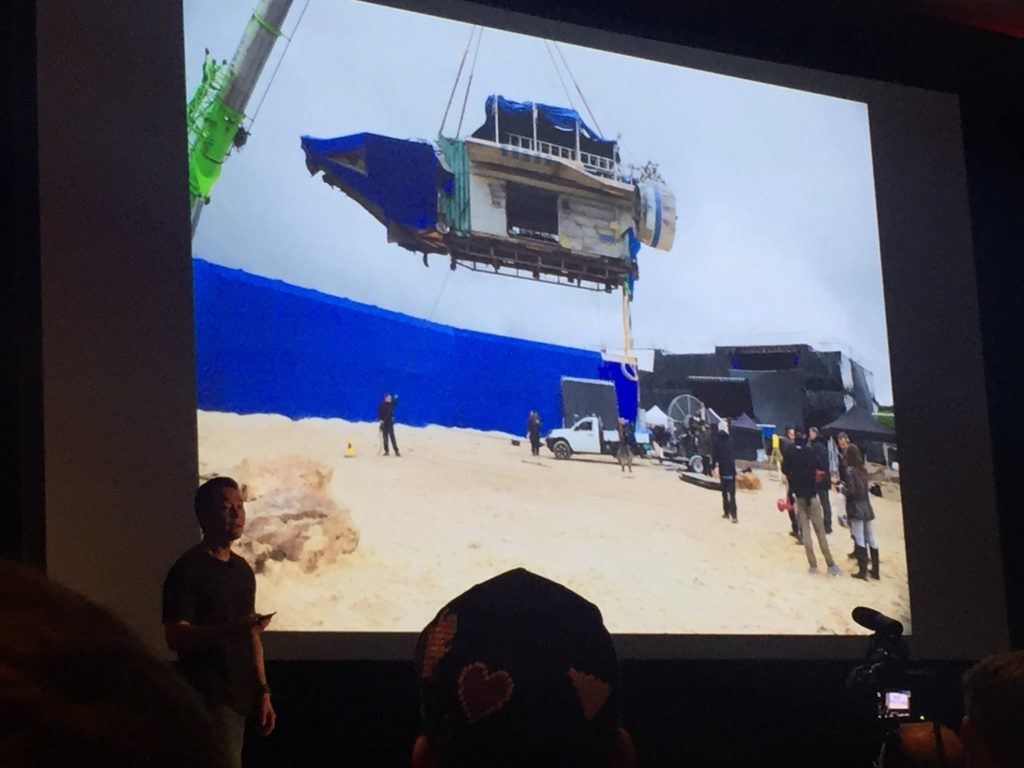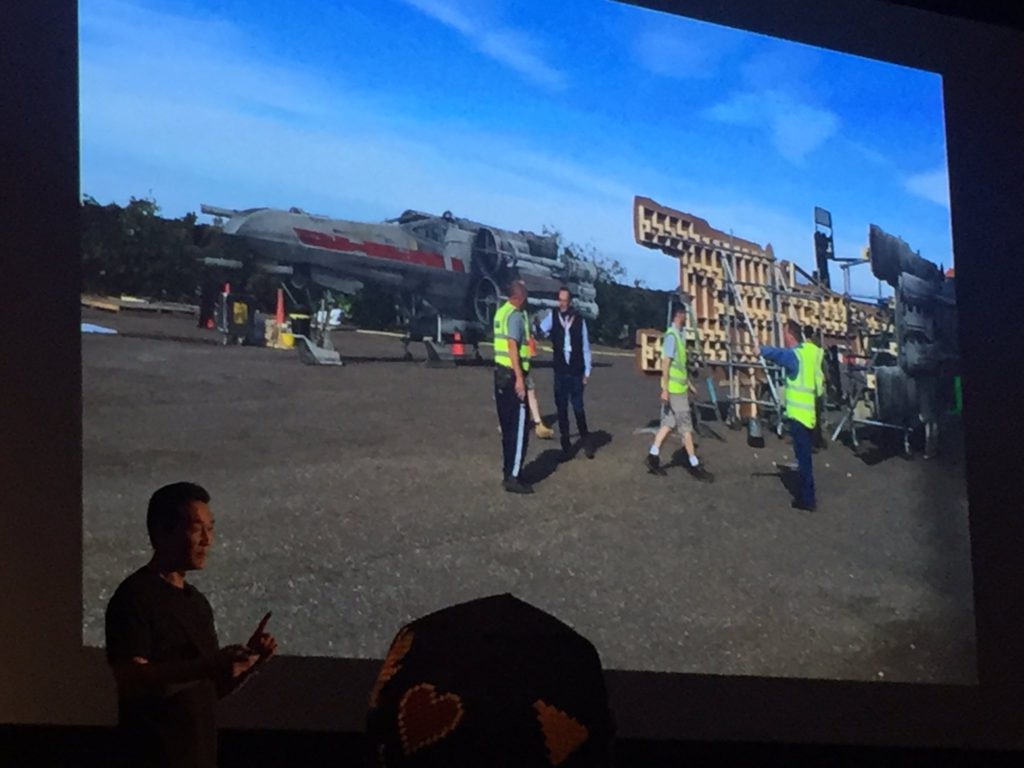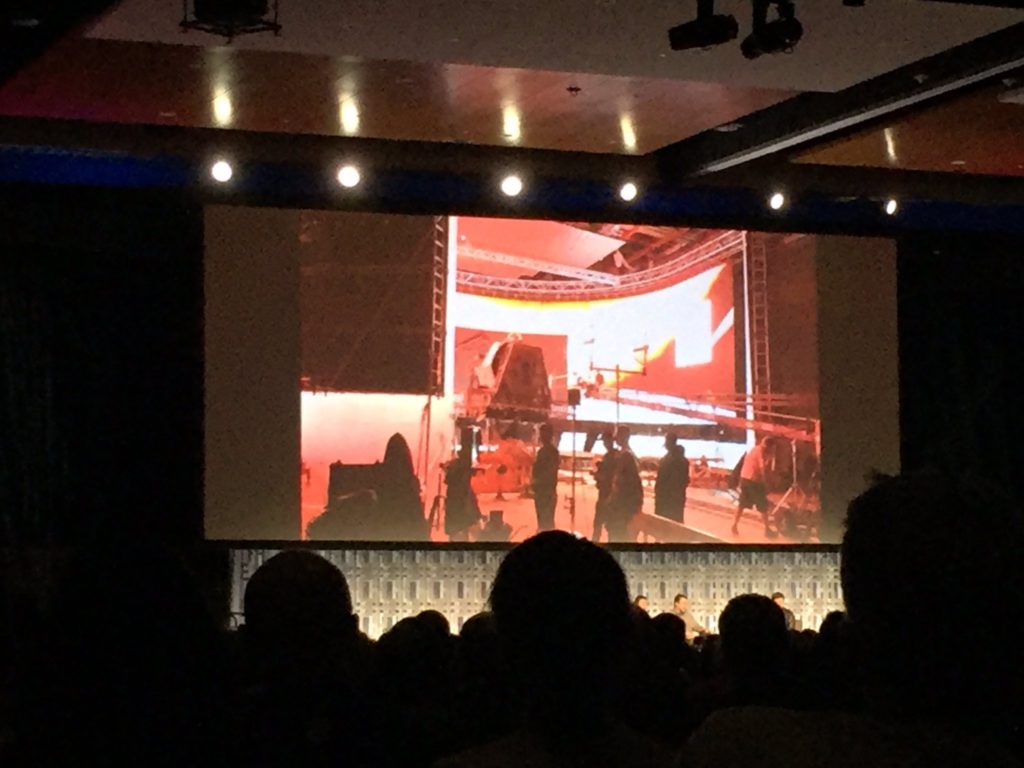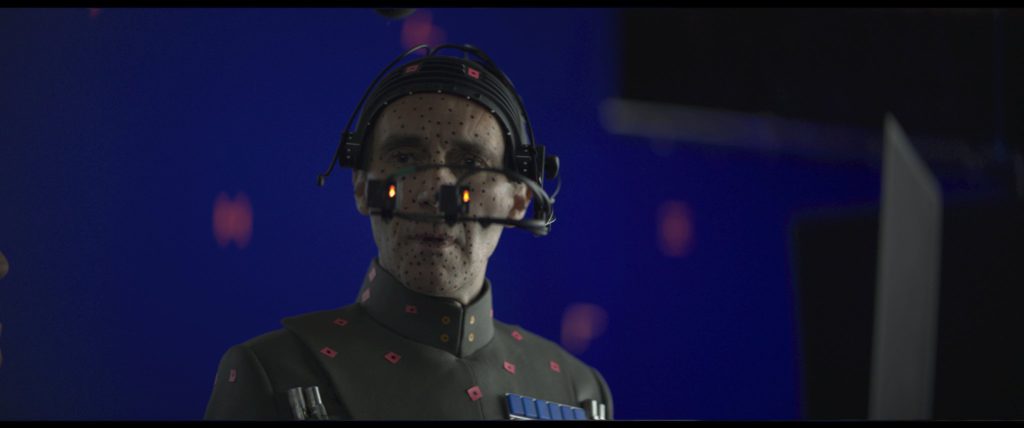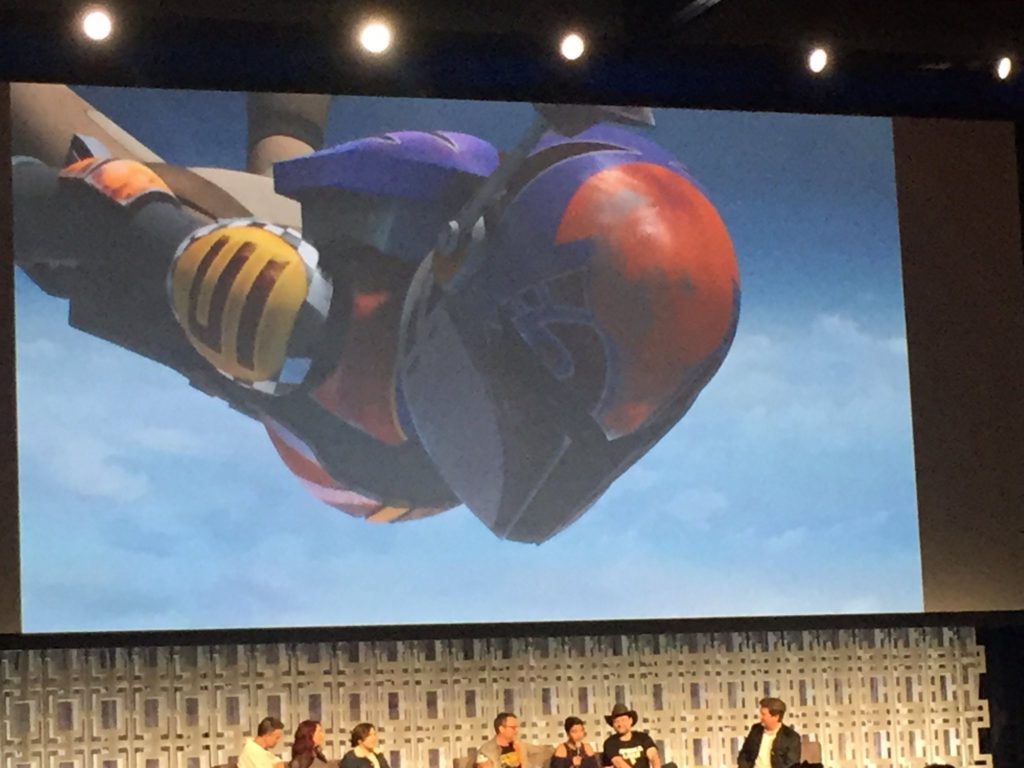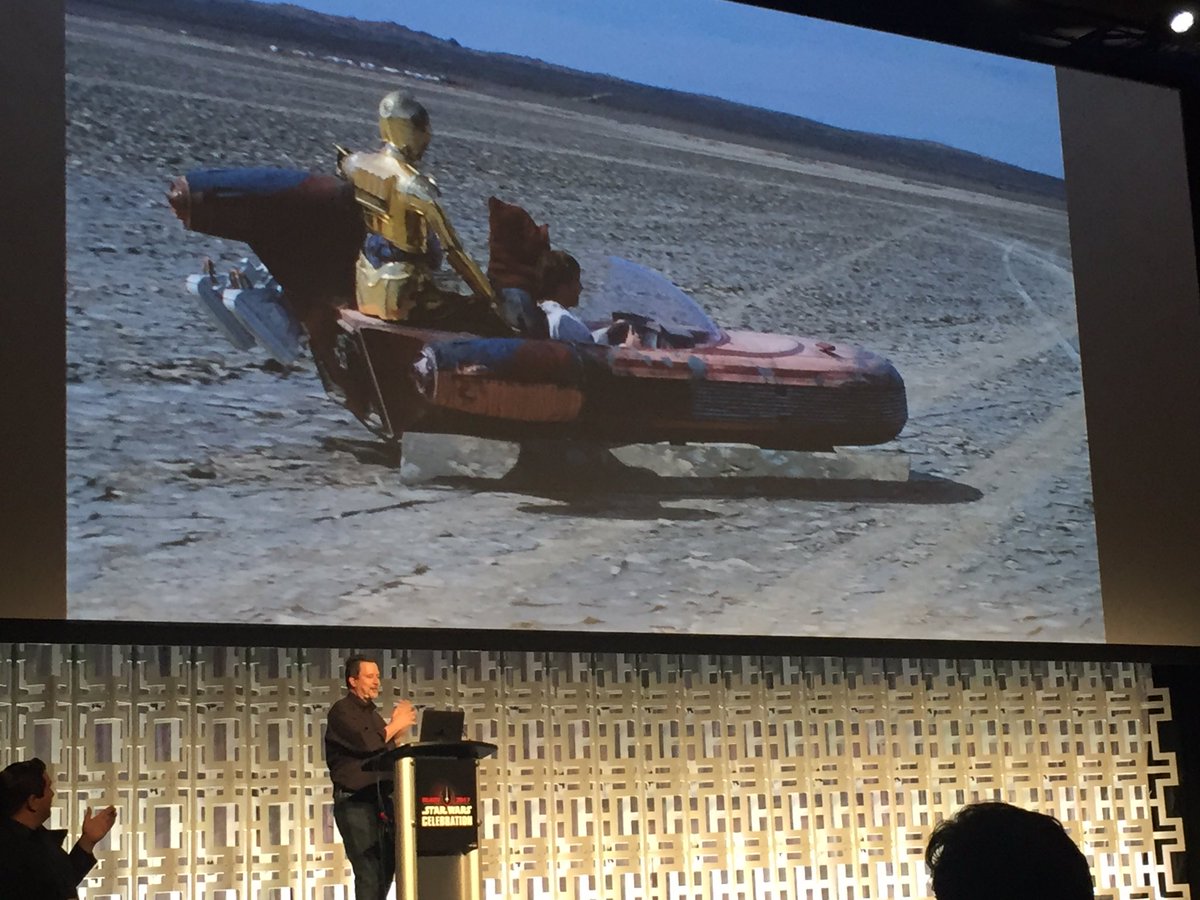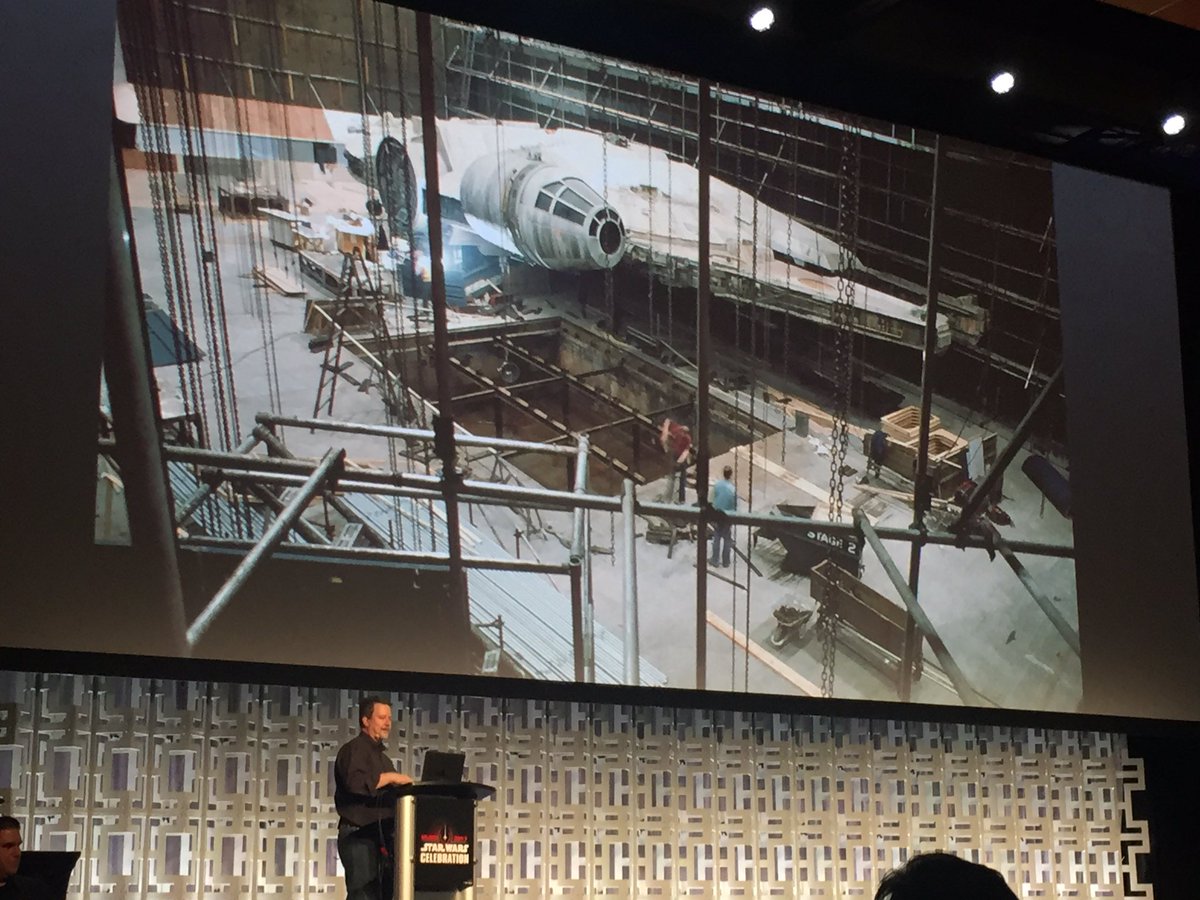Star Wars Celebration 2017 offered many learning opportunities for fans, many of which centered around Rogue One since Lucasfilm is remaining very tight-lipped about The Last Jedi. Here are a few interesting facts that you can add to your personal Holocron of Star Wars knowledge.
- Chewbacca was inspired by Goerge Lucas’ dog, Indiana. In fact, the original treatment for the character had him more dog-like than he ultimately appeared on screen. This sort of makes Barf the Mawg from the parody film Spaceballs seem like Lucas’ original Wookie vision.
- Production Designer Doug Chiang revealed that Rogue One was designed to be 80% like A New Hope and 20% new, but within that 20%, there are also attempts to connect the style of the prequel trilogy with the original trilogy.
- In Rogue One, Jedha Temple and Vader’s Castle are both shaped like tuning forks. This design has great symbolism as these buildings are symbolically tuning the light and dark sides of the force.
- Ship interiors and exteriors for Rogue One were built around shipping containers. This allowed them to be moved to indoor and outdoor sets and also put on gimbals to shoot cockpit sequences.
- Rogue One was under such strict budget constraints that the team had to work their shots to make at least 30% of every frame something the camera picked up in-lens. This means that even the most effects heavy shots in the film are only 70% computer generated.
- LED screens were used in many scenes on Rogue One, sometimes as a prop like at the Rebel Base and other times to light the characters. A wrapped screen was used for all cockpit scenes and could reflect images of space, other ships, and lightspeed warps onto the actor’s faces and costumes. In some scenes, the LED screens in the background were so convincing that they didn’t need to replace them with digital images.
- To make Gran Moff Tarkin look real in Rogue One, a motion capture version of actor Guy Henry was first applied to every scene the character is in. The digital artists would make sure the lighting on Henry’s CG face matched what was on the actor’s face before switching his face to that of Peter Cushings, who played Tarkin in A New Hope. This helped the team achieve a realistic motion capture recreation.
- The look of Sabine Wren from Star Wars Rebels was inspired by Harajuku style in Japan. When Dave Filoni created the rebellious Mandalorian with artistic flair, he thought she would fit right in with the Harajuku movement and those styles greatly influenced her design.
- Lastly, taking it back to the original trilogy, ILM effects wizard John Knoll shared some photos that he discovered around Lucasfilm, some of which have been published in his book. My personal favorites included the mirror skirt from Luke’s Landspeeder and seeing the Millennium Falcon construction photos. For the Falcon, they could only fit half of it on a soundstage and if a film shoot required actors to be outside of it in more than one location, they would tear down and build a new set around the existing half of the Falcon.
I had a great time learning some of the behind-the-scenes secrets of Star Wars and can’t wait for the next Star Wars Celebration to find out more amazing secrets behind the force.

